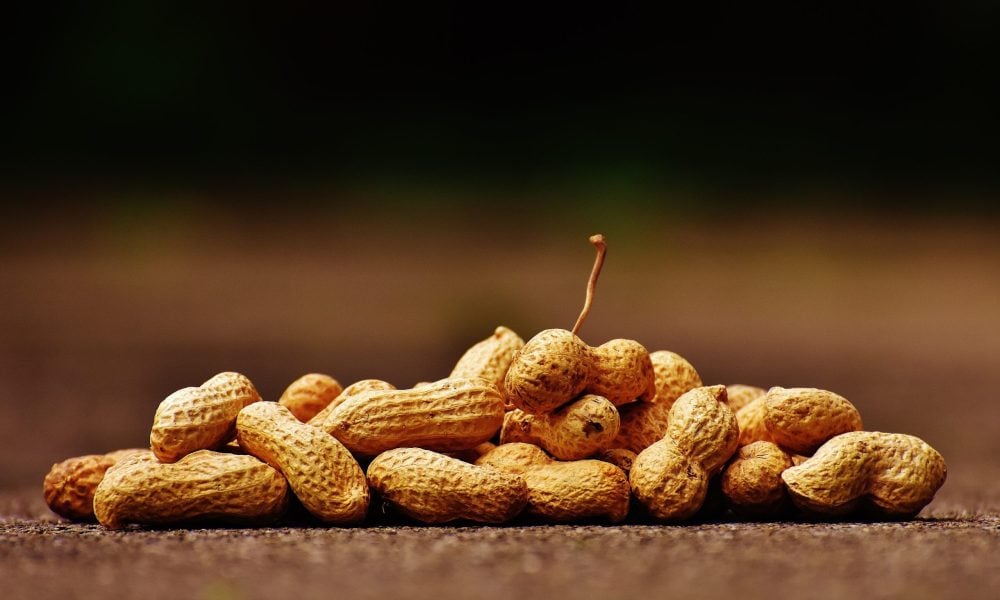Is a peanut a nut? You might be surprised that over 1,000 people in the UK currently ask this question every month! Today we’ll answer this question and several other nutty questions covering peanuts, tree nuts, and even coconuts!
The 14 most common allergens in the UK, typically known as either the 14 major or 14 main allergens, contain both peanut and tree nut allergies. It’s common to think that peanuts are nuts and not consider the difference between nuts and tree nuts, for example; but due to the differences in the foods’ chemical structure, your body can react to them differently.
It’s important to understand the difference between these foods to keep yourself and consumers safe if working in the food industry. Here we’ll clarify some common misconceptions surrounding this topic.
What Are Tree Nuts? Are Peanuts, Nuts?
As the name suggests, tree nuts are a type of nut that grows on trees, with the most common examples being Brazil nuts, almonds, hazelnuts, cashews, walnuts, pecans, and pistachios.
Peanuts, on the other hand, are grown underground, and while they’re technically known as a type of nut, they’re actually classified as a legume. I know – nutty!
The difference between nuts and legumes is that nuts are encased in a shell that typically only contains one or two seeds, while legumes may contain far more and are contained in a pod. A simple example of legumes that illustrate this difference would be green peas or black kidney beans, as seen below. Not all tree nuts are edible, such as horse chestnuts, which is why edible nuts are known as ‘culinary nuts’, and are covered in our ‘Tree nut Allergy’ guide.

While pods and shells are terms often used interchangeably, slight differences exist. Pods are typically longer to accommodate multiple seeds and tend to open naturally when the legume matures, though this isn’t the case with peanuts.
To summarise, peanuts classify as a legume. However, they look quite similar to nuts and don’t have all of the typical signs of a legume which makes it hard to tell the difference initially and, of course, it adds to confusion that the word ‘nuts’ is contained in ‘peanuts’!
Is a coconut a nut?
While it’s common to consider coconuts a culinary nut, it is not a nut according to the botanical definition, which the US Department of Agriculture defines as a “particular kind of dry fruit that has a single seed, a hard shell, and a protective husk.”.
Typing the question ‘is coconut a nut’ into your search engine of choice yields a lot of conflicting information. While coconuts are fruits, the FDA considers them to be tree nuts for the purposes of allergen labelling, though the proper classification is that coconuts are a type of drupe.
Drupes are commonly identified as single-seeded fruit that are encased within a stone shell, typically known as a pit. Drupes have three layers that contain the seed: the exocarp is the outermost layer, commonly known as the skin, the mesocarp is the soft middle layer we normally eat; and then the endocarp is the hard covering known as the pit. Collectively these three layers are known as pericarp.

Why is it important to understand the difference?
It’s essential to know how different foods are categorised because your body may react to them in different ways. In most cases, allergic reactions to food are caused by the body’s immune system mistakenly identifying the proteins in the food as harmful to the body. As a result, the immune system releases an antibody (a protein that combats harmful foreign substances) known as immunoglobulin E. The antibody then helps release histamine, a chemical that causes typical allergy symptoms.
An example of common allergy symptoms you can expect from a coconut allergy, tree nut allergy, or peanut allergy include:
- itching or rashes (hives)
- vomiting or general nausea
- diarrhoea
- stomach pain
- coughing or difficulty breathing
In severe cases, you may go into anaphylactic shock, also known as anaphylaxis, which is potentially fatal. Anaphylaxis occurs when histamine causes a sudden drop in blood pressure and constricts airways, making breathing hard. Symptoms may include:
- difficulties breathing
- a swollen tongue or throat
- low blood pressure
- dizziness
- vomiting
- fainting
- sweating
- a rapid pulse
Peanuts, coconuts, and even different types of nuts and tree nuts all have different proteins, which means your body will react in different ways. You may be allergic to peanuts and have no difficulties eating coconuts or vice versa. It’s even possible to be allergic to certain nuts and have no difficulty eating others. However, certain nuts, such as walnuts and pecans, have high levels of cross-reactivity due to protein similarities.
If you are a food safety or quality assurance professional at a food business, having a clear understanding of the 14 major allergens is essential. Knowing how allergic reactions occur will help customers make more informed choices about which products to purchase. It’s important for staff to be knowledgeable in this area to avoid giving customers inaccurate information while maintaining a high standard of food safety by avoiding common mistakes such as incorrect food labels, menus and cross-contamination.
We hope this post has helped make the differences between food allergies clearer. If you want more information about the 14 Major Allergens, please check out our 14 Major Allergens Information Hub.
LiberEat - Allergen Error Detection Software
Food allergen rules and regulations continue to change and evolve. Food businesses in production, hospitality, catering, and retail must be vigilant when working with ingredients, products, and dishes containing allergens and exercise due diligence when providing ingredient and allergen information to consumers. Successful allergen management is a big part of Food Safety professionals creating a culture of care and excellence within their teams.
LiberEat offers a second line of defence for food businesses by detecting errors, allergens, and other harmful ingredients with our proprietary Allergen Detection Software. Food businesses can apply this technology directly to identify errors in allergen communications, preventing the risk of injury to consumers. Contact us today to learn more about how we can support your existing food safety processes.
LiberEat works closely with food businesses to ensure consumers are safe and healthy when consuming your produce.
To find out how LiberEat Technology supports food businesses to detect allergens and errors, to protect consumers
Sources
- A Food Labeling Guide | FDA
- Anaphylaxis | Mayo Clinic
- Anaphylaxis | NHS
- Blood groups | NHS
- Food Allergies and Cross-Reactivity | Kids with Food Allergies
- Food allergy | NHS
- How to avoid confusing horse chestnuts with sweet chestnuts | ANSES
- Is a coconut a fruit, nut or seed? | Library of Congress
- What Is an Allergic Reaction? | WebMD

